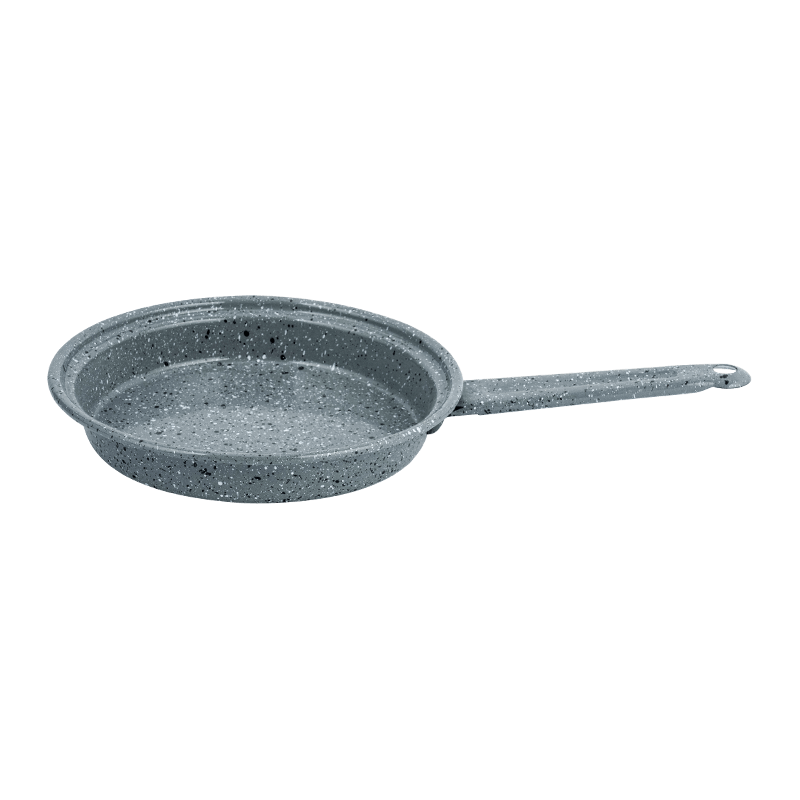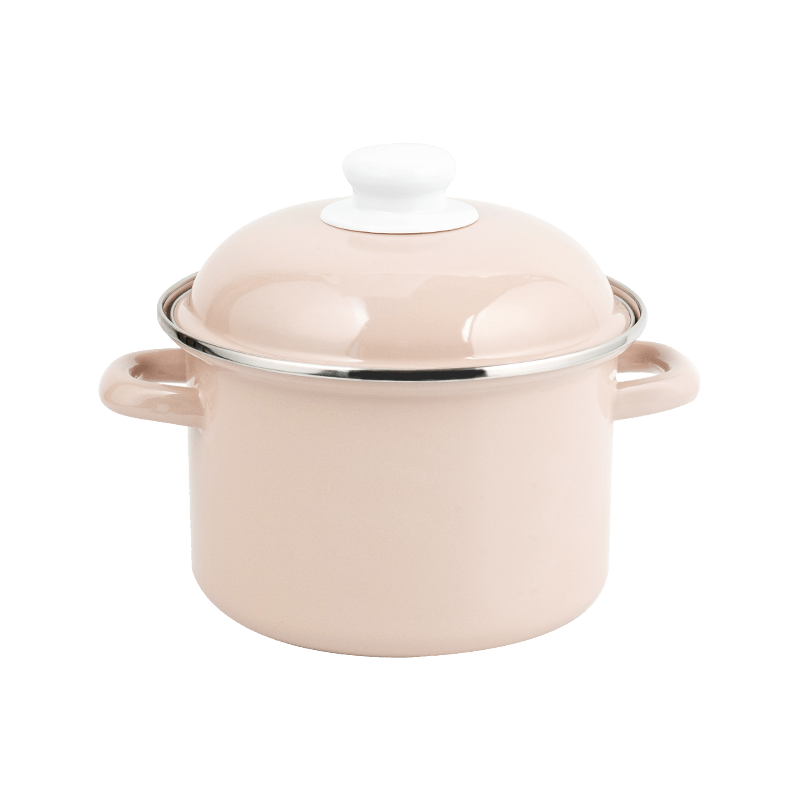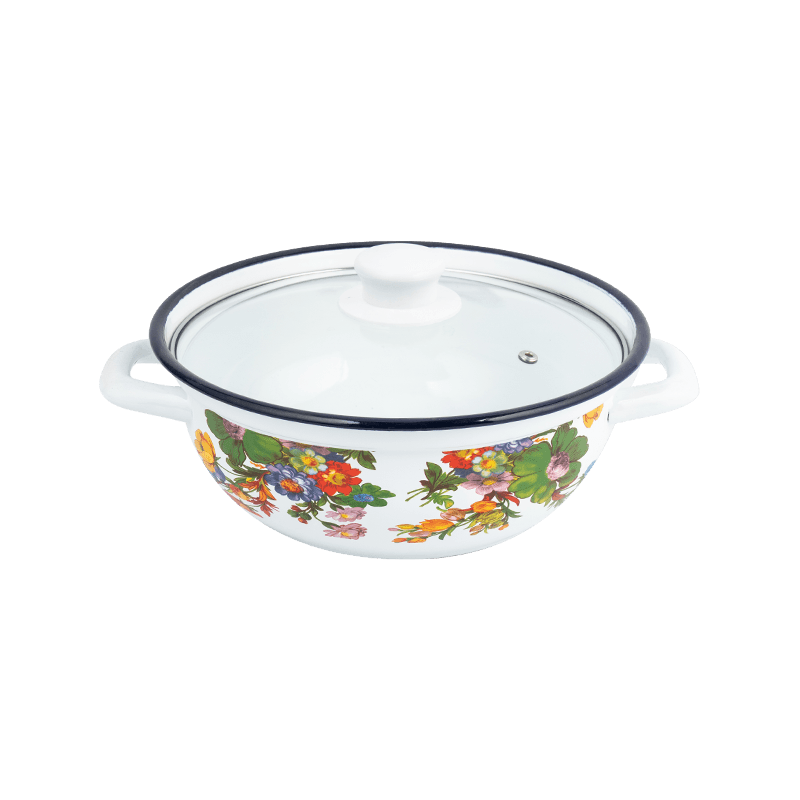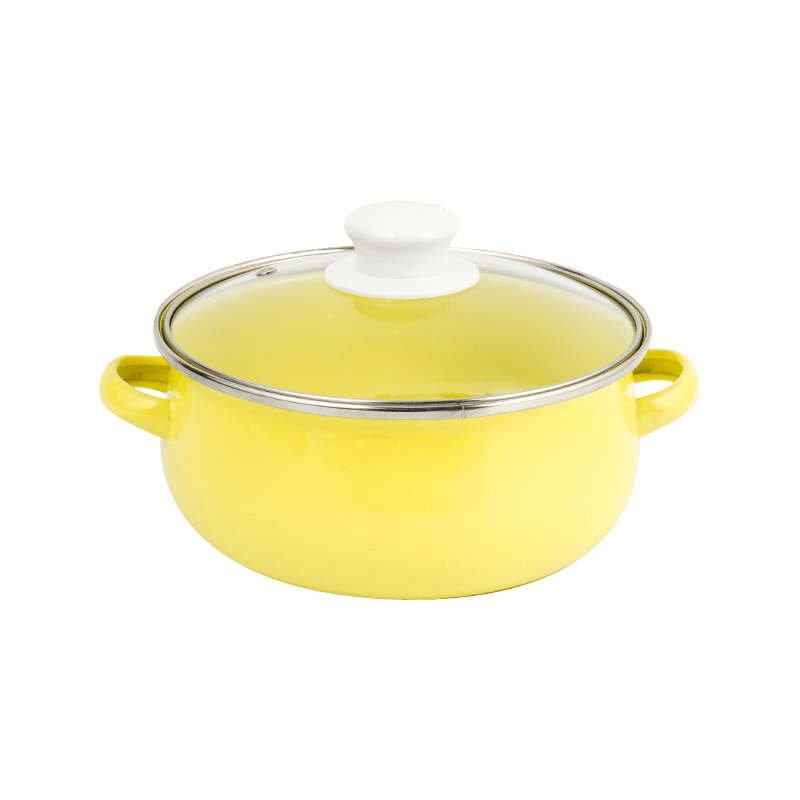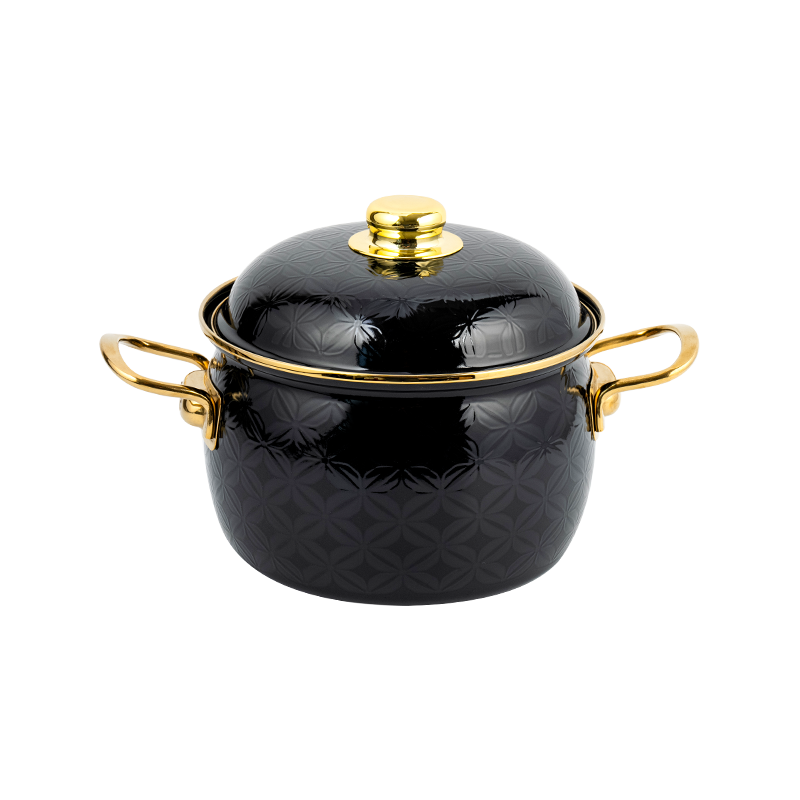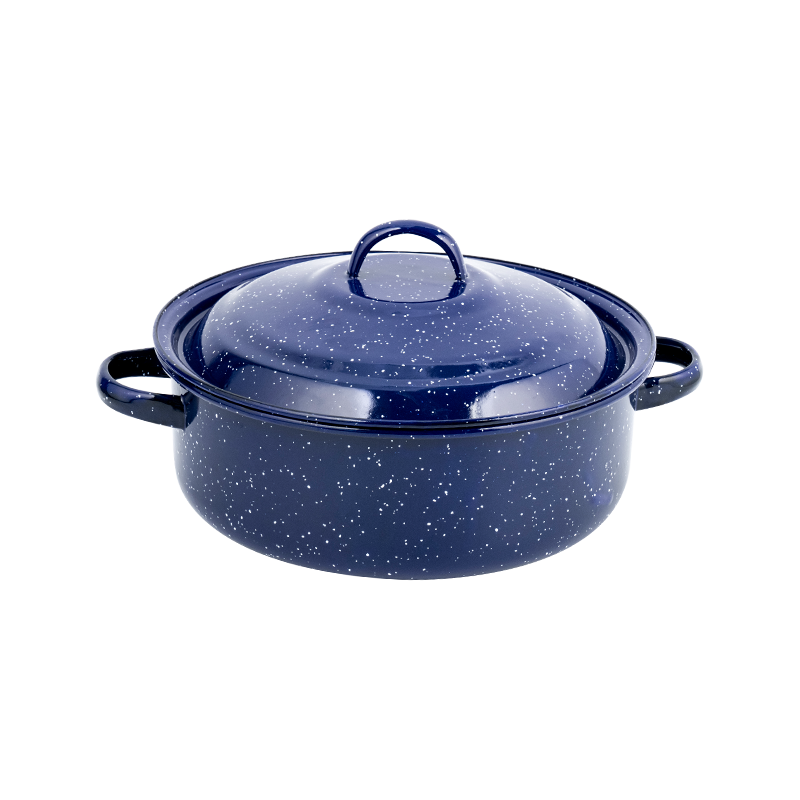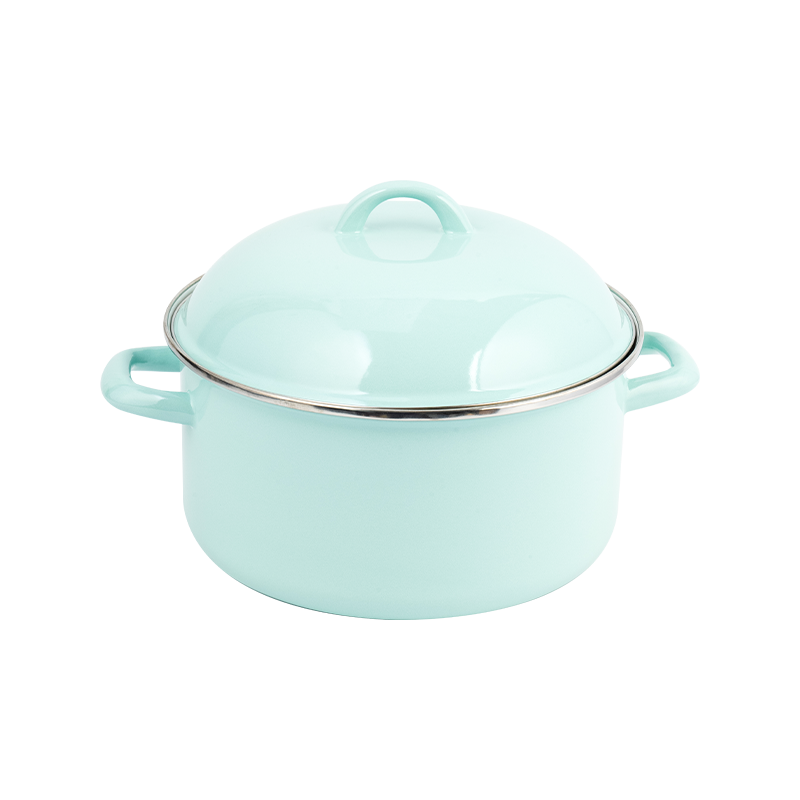Enamel-coated cookware, like the classic Double Handle Enamel Pot, offers excellent heat distribution, non-reactive cooking surfaces, and timeless aesthetic appeal. However, its long-term performance and beauty depend significantly on proper cleaning techniques. Unlike bare cast iron or stainless steel, enamel requires specific care to prevent chipping, scratching, or clouding of its glass-like surface.
Understanding the Surface:
The enamel coating is essentially a layer of fused glass onto metal. While durable and resistant to acids and stains when intact, it can be scratched by abrasives or chipped by severe impacts. The key to cleaning is gentleness combined with effectiveness.
Essential Cleaning Steps:
-
Cool Down Completely: Never plunge a hot Double Handle Enamel Pot into cold water or apply cold water directly to the hot surface. The drastic temperature change can cause thermal shock, potentially cracking or crazing the enamel. Allow the pot to cool to room temperature naturally before cleaning.
-
Initial Rinse & Soak:
-
Fill the pot with warm water immediately after use (once cooled sufficiently). This prevents food residues from hardening and bonding to the enamel.
-
For stuck-on food, add a few drops of mild dish soap to the warm water and soak for 15-30 minutes. Avoid using overly hot water for soaking as it can set certain proteins.
-
-
Gentle Washing:
-
Use a soft sponge, cloth, or nylon brush specifically designed for non-stick or delicate surfaces.
-
Apply a small amount of mild, non-abrasive dish soap.
-
Gently scrub the interior, exterior, and around the double handles. Pay attention to crevices where food might collect, especially near the rim and handles.
-
Crucially, avoid: Steel wool, metal scouring pads, harsh powdered cleansers, or abrasive sponges (like the green Scotch-Brite type). These will scratch the enamel surface, creating micro-abrasions that dull the finish and make it more susceptible to staining and further damage.
-
-
Tackling Stubborn Residue:
-
Baking Soda Paste: For burnt-on food or stains, make a paste of baking soda and water. Apply it to the affected area and let it sit for 15-30 minutes. Gently scrub with a soft sponge or nylon brush. Baking soda is mildly abrasive but generally safe for enamel when used gently and sparingly.
-
Gentle Boiling: For widespread stuck-on food, fill the pot with water and add a tablespoon of baking soda. Bring to a gentle boil for a few minutes, then turn off the heat and allow it to cool. The combination of heat and alkalinity helps loosen debris. Once cool, wash as usual.
-
White Vinegar Solution: For mineral deposits (white, cloudy film) caused by hard water, fill the pot with a solution of equal parts white vinegar and water. Bring to a simmer (do not boil vigorously), then turn off the heat and let it sit for an hour. Rinse thoroughly and wash with mild soap and water.
-
-
Thorough Rinsing & Drying:
-
Rinse the Double Handle Enamel Pot extremely well with clean water, ensuring all soap, baking soda, or vinegar residue is removed.
-
Dry the pot completely with a soft towel, including the area around and underneath the double handles. Air-drying upside down on a rack is also effective. Moisture left sitting, especially on the exterior bottom or between handles and the pot body, can contribute to rust formation on any exposed metal edges over time.
-
Important Considerations & Avoidances:
-
Dishwasher Use: While many modern enamel pots are labeled dishwasher-safe, hand washing is strongly recommended for longevity. The harsh detergents and high-impact spray in dishwashers can gradually dull the enamel's gloss and increase the risk of chipping, particularly around the rim and handles. If using a dishwasher, place the pot securely to prevent it from knocking against other items.
-
Avoid Sudden Temperature Changes: As emphasized earlier, always let the pot cool before adding cold water or placing it in a sink. Avoid placing a cold Double Handle Enamel Pot directly onto a high heat source; allow it to warm gradually.
-
Use Wooden or Silicone Utensils: While enamel is hard, metal utensils can potentially cause scratches or chips if used with excessive force, especially if striking the rim or handles. Wooden, bamboo, or silicone utensils are safer choices.
-
Storage: Store carefully to prevent chipping. Avoid stacking heavy items directly inside the pot if possible. If stacking pots, place a soft cloth or paper towel between them to protect the enamel surfaces.
Long-Term Preservation:
Consistent, gentle cleaning is the most effective way to preserve the enamel coating on your Double Handle Enamel Pot. Addressing spills and residues promptly prevents the need for harsh cleaning methods later. Inspect the enamel periodically for any chips or cracks; while small chips in the cooking surface may not render the pot unusable, they warrant extra caution to prevent rust or further damage.
By adhering to these professional cleaning guidelines, you ensure that your Double Handle Enamel Pot maintains its functionality, aesthetic appeal, and value, providing reliable service for countless meals to come.

 English
English 中文简体
中文简体




